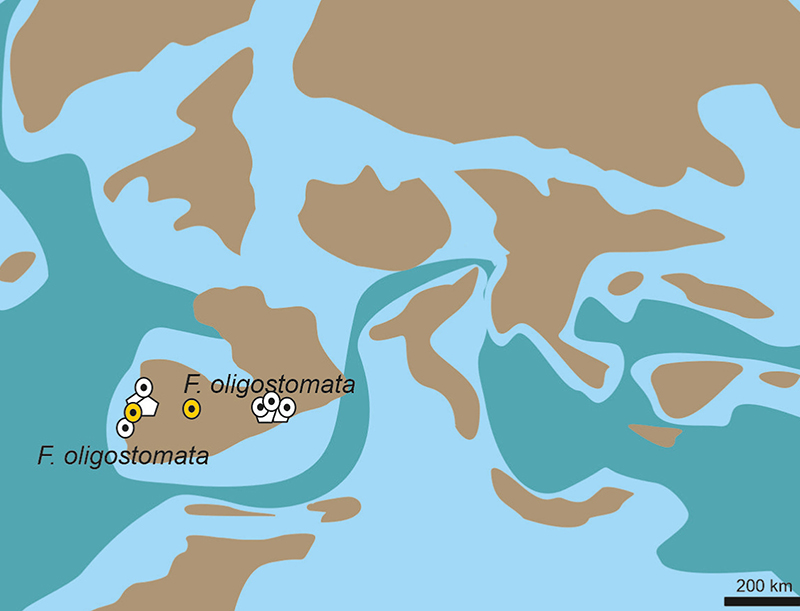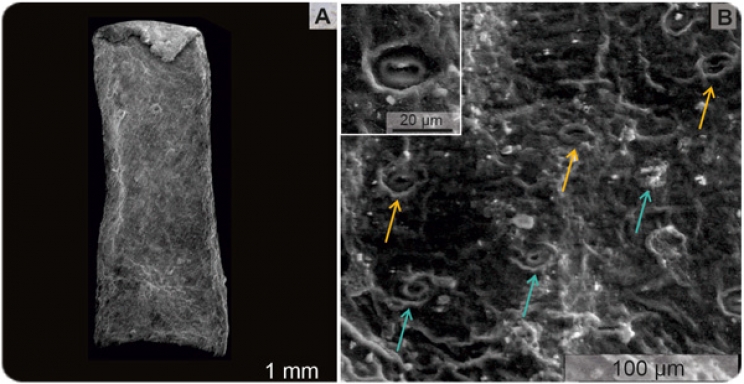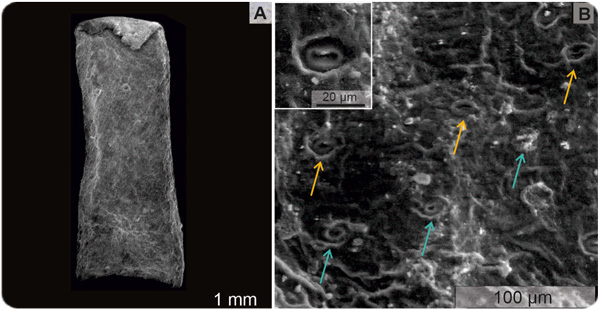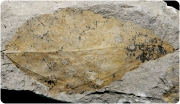Frenelopsis was a genus of Mesozoic conifers very abundant during the Cretaceous, between 145 and 66 million years ago, on the islands and continents bordering the ancient tropical sea of Tethys, precursor of the Mediterranean. This plant, similar in appearance to today's junipers, lived forming dense, almost monospecific populations in freshwater and brackish wetlands, where they produced a large amount of biomass.
A study carried out by a team of paleobotanists from the Department of Earth and Ocean Dynamics (University of Barcelona), IRBio and the Dinosaur Ecosystems Research Group (Institut Català de Paleontologia Miquel Crusafont) has shown that this conifer presented a first expansive stage with high biodiversity during the Lower Cretaceous (between 145 and 100 million years ago), followed by a long decline during the Late Cretaceous (between 100 and 66 million years ago). The current Iberian Peninsula, then Iberoarmorica, a palaeoisland within the Tethys Sea archipelago, was an important focus of speciation of Frenelopsis, both with endemic species and others that displayed a wide geographical distribution.

Palaeogeographic map showing the distribution of the last Frenelopsis on the Ibero-Armorican Island
The last representatives of this conifer are found in the uppermost Cretaceous of the Pyrenees (about 68-70 million years ago), where its vegetative remains, very abundant, were precursors of lignite exploited, for example, in the coal mines of Fígols, Vallcebre and Saldes (Catalonia). Contrary to what would be expected, the pollen of this conifer, called Classopollis, has not been found in any of the terminal Cretaceous sites of the Pyrenees, despite the fact that it is a large and resistant pollen that was produced in large quantities. This absence, together with the fact that abortive pollen grains are detected in some older sites, has led to the hypothesis that the last populations of Frenelopsis in the Pyrenees would have had only vegetative reproduction and survived as relicts in the paleoisland. To confirm this hypothesis of male sterility, further research is needed on Classopollis pollen from the Pyrenean uppermost Cretaceous.
Main image: Detail of an internode showing one free tip of a folded-down leaf (A) and the cuticle of Frenelopsis displaying sunken and aligned stomata (B).
Original article:
- Marmi, J., Tosal, A. & Martín-Closas, C. (2023). Evolutionary history, biogeography, and extinction of the Cretaceous cheirolepidiaceous conifer, Frenelopsis. Evolving Earth 1, 100017. DOI: https://doi.org/10.1016/j.eve.2023.100017












